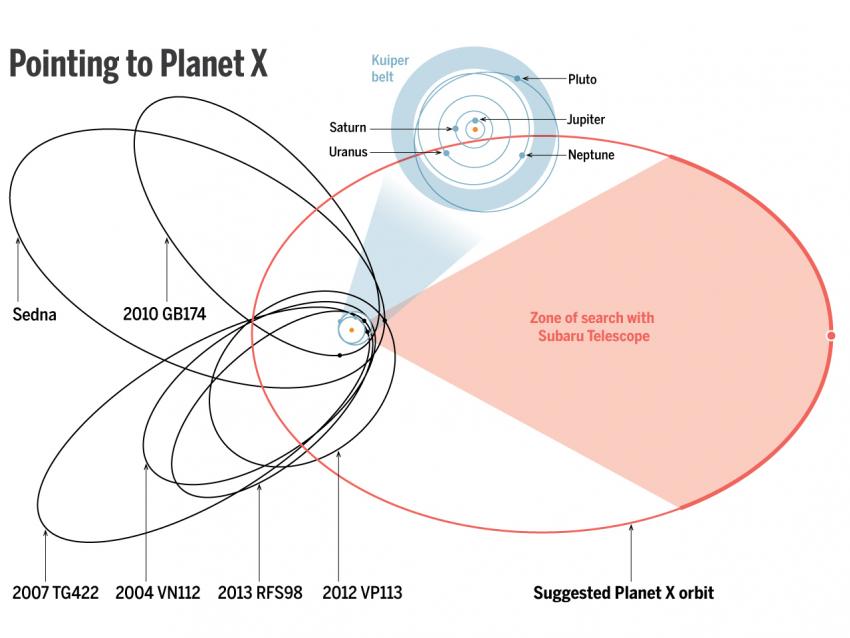'Planet X' is the name given for a possible, as yet undiscovered ninth planet within our solar system that was recently theorized to exist. The postulation for the occurrence of such a new planet does not imply that it actually exists at all, however, researchers have uncovered evidence that it may indeed exist, and several groups of astronomers have begun searching for it. The evidence for a Planet X is indirect and comes from detailed observations of the orbits of several planet-like bodies orbiting on the distant edges of the solar system. These are the so-called Kuiper Belt Objects (KBOs) which include dwarf planets and other icy-like bodies. The orbits for a number of these KBOs appear to cluster together in a way that can be explained by the gravitational influence of another larger body, possibly a Planet X. The theory implies that Planet X, should it exist would be up to 10 times the mass of Earth and orbit about 56 billion miles outwards from the sun (20 times further out than Neptune's average distance from the sun). At such distances the object would take somewhere between 15,000 to 20,000 years to orbit the sun. Check out this informational video with the two astronomers who theorized the existence of Planet X.

The most recent argument for 'Planet x' rests on the apparent orbital (perihelion) alignment of six icy bodies residing at the furthest distances in the solar system. The idea is that their 'aligned' orbits were perhaps gravitationally shepherded through the action of the proposed Planet X. Figure from Science, Jan 20, 2016.



